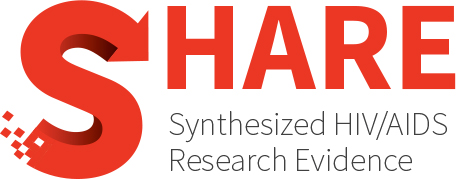Category Archives: Biomedical interventions
Immune responses to vaginal candidiasis in African women: A scoping review of cytokine profiles, T-cell activation, and gene expression
Background Recent immunological studies of vaginal candidiasis in African populations have revealed complex host‒pathogen interactions with implications for therapeutic development and HIV acquisition risk. Objective This scoping review synthesized evidence...
Adolescents’ sexual health during the COVID-19 outbreak: A systematic review
BACKGROUND AND AIMS: The COVID-19 pandemic has greatly disrupted adolescents’ access to sexual health services, resulting in a decline in their overall sexual well-being. This systematic review explored adolescent sexual...
Effectiveness of digital health interventions in promoting the pre-exposure prophylaxis (PrEP) care continuum among men who have sex with men (MSM): A systematic review of randomized controlled trials
PURPOSE OF REVIEW: Digital health interventions have demonstrated great potential to advance HIV prevention and care. However, their effectiveness in improving the pre-exposure prophylaxis (PrEP) care continuum has not yet...
A systematic literature review on pre-exposure prophylaxis as a strategy for HIV risk reduction in the Middle East
Pre-exposure prophylaxis (PrEP) has emerged as a crucial tool in HIV prevention globally, yet its implementation in the Middle East and North Africa (MENA) region faces unique challenges. PrEP is...
Technology-assisted interventions in the delivery of HIV prevention, care, and treatment services in sub-Saharan Africa: Scoping review
BACKGROUND: Sub-Saharan Africa (SSA) accounts for up to 67% of the global HIV burden yet grapples with health system challenges like distant health facilities, low doctor-to-patient ratio, and poor or...
Use of behavior change techniques in digital HIV prevention programs for adolescents and young people: Systematic review
BACKGROUND: HIV infections have caused severe public health and economic burdens to the world. Adolescents and young people continue to constitute a large proportion of newly diagnosed HIV cases. Digital...
Efficacy, immunogenicity, and safety of the Novavax COVID-19 vaccine in immunocompromised patients: A targeted literature review
Individuals who are immunocompromised (IIC) may have impaired infection prevention/resolution, potentially causing increased disease severity, complications, and healthcare-system strain. Exclusion of IIC from COVID-19 vaccine trials and limited real-world Novavax...
Pneumocystis infection in pregnant women: A scoping review
Pneumocystis jirovecii is an opportunistic fungus that causes severe pneumonia in immunosuppressed individuals. While Pneumocystis colonization, a subclinical form of infection, has been studied in different populations, its implications during...
Pre-exposure prophylaxis uptake among Black/African American men who have sex with other men in Midwestern, United States: A systematic review
INTRODUCTION: Black/African American men who have sex with other men (BMSM) are disproportionately affected by HIV, experience significant disparities in HIV incidence, and face significant barriers to accessing HIV treatment...
Gastrointestinal Escherichia coli in men who have sex with men: A systematic review
OBJECTIVE: This systematic review aimed to explore any demographic, biological and behavioural characteristics of men who have sex with men (MSM) with diarrhoeagenic E.coli. DESIGN/METHODS: We searched MEDLINE, EMBASE, and...
